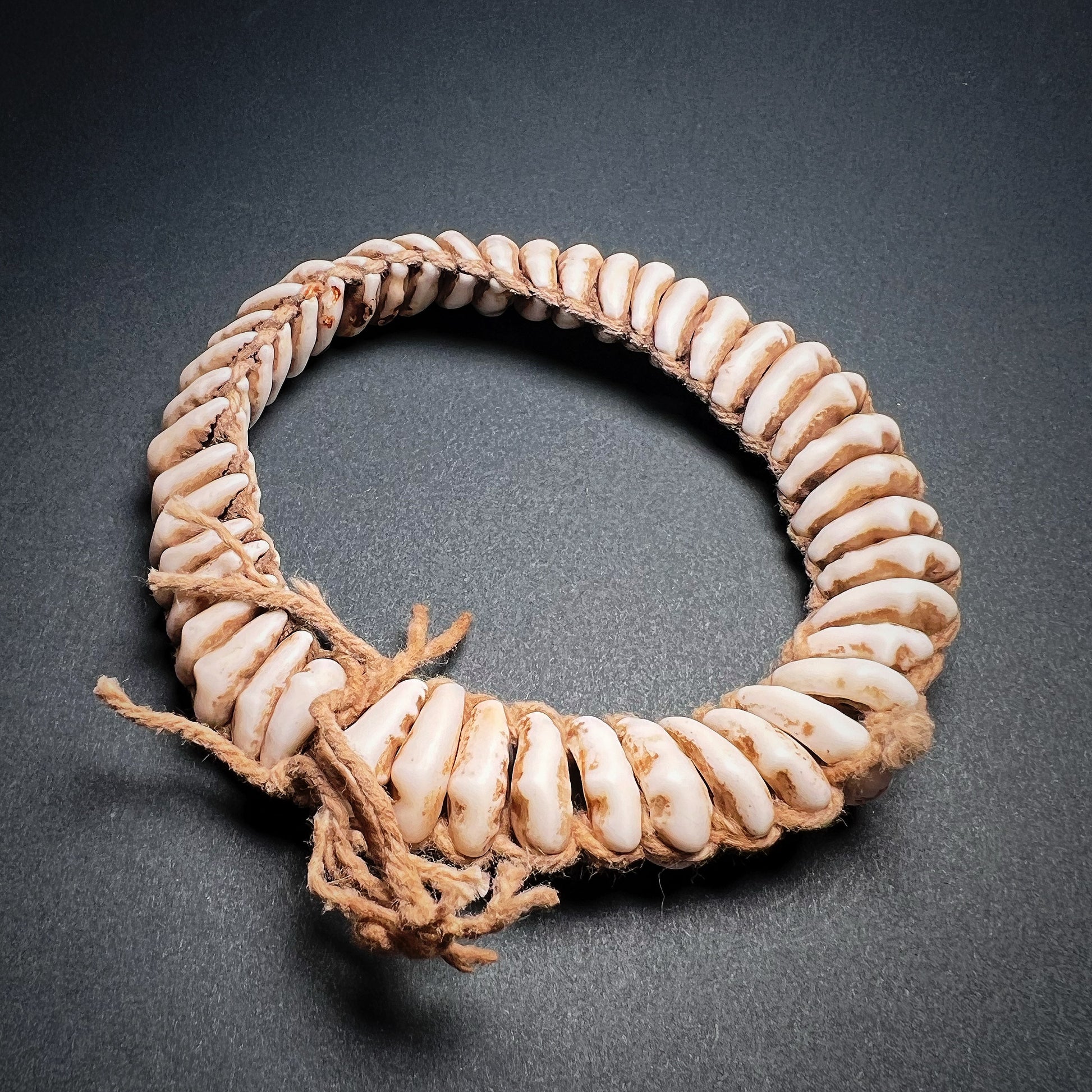Toussian Cowrie Shell Currency Armlet
Toussian Cowrie Shell Currency Armlet
Couldn't load pickup availability
Toussian people, late 19th to early 20th century, Burkina Faso, West Africa
A charming and evocative aged cowrie shell armlet—originally a form of currency—composed of 44 carefully cut cowrie shells threaded onto a slender cotton band. Light, tactile, and elegantly arranged, this piece embodies both adornment and economic history.
Cowrie shells served as one of the earliest and most widespread forms of money, prized across Africa, Asia, Europe, and Oceania for their portability, durability, and distinctive beauty. In West Africa, particularly from the 14th century onward, cowries (especially Cypraea moneta and C. annulus) became a dominant medium of exchange. Imported primarily from the Maldives and transported across vast trade routes—including the Sahara—they were used to purchase goods, settle debts, and measure wealth and social rank.
By the early 16th century, cowries had become deeply embedded in West African economies. Portuguese traders introduced enormous quantities of shells, which soon became the “shell money of the slave trade,” exchanged for gold, slaves, and other commodities. Over time, the economic role of cowries gradually shifted, yet their symbolic power endured. They continued to be used as ornament, protective charm (gris-gris), ritual object, and status marker well into the 20th century.
The Toussian (Tusyan) people, a small cultural group in southwestern Burkina Faso and surrounding regions, historically incorporated cowrie currency and ornamentation into their broader aesthetic and ritual traditions. This necklace reflects that heritage—an authentic, tactile remnant of West Africa’s intertwined histories of commerce, identity, and adornment.
Good condition. Expected nicks, loose threads, abrasions, fraying, and softening of detail, all commensurate with age and use. Lovely dark patina. Size approx. 25,0cm x 1,8cm x 1,2cm.
Provenance: Dutch private collection.


-
Shipping
The shipment will be prepared in the course of 3-5 days and dispatched via Posti Group Oyj or purchased item(s) can be picked up from our shop during the store's opening hours (Tarkk’ampujankatu 4, 00140, Helsinki, Finland). Within the Finland, all items are shipped via Posti Group Oyj unless otherwise requested. We pack the items carefully and mainly in recycled materials because we want to save nature. You will receive the tracking number for your items by e-mail.
-
Returns
Returns and exchange will be accepted within fourteen days (14) of receipt at the purchaser’s cost to include freight and packaging. Items must be returned in the same condition as when they were shipped, and will not be accepted if damaged or altered in any way. Please inform us via email (info@gotanmaailma.fi) or by calling +358408408352 before sending. We do not accept returns more than 14 days after delivery.


